Journey Along the Kisokaidō road: From Hiroshige to Kuniyoshi
16 十月 2020 to 8 八月 2021
Journey Along the Kisokaidō road: Hiroshige to Kuniyoshi is the Cernuschi Museum’s first exhibition after nine months of closing for renovations.
It presents an unprecedented collection of almost 150 Japanese prints, some of which are seen by the public for the first time.
9 € Full rate
7 € Concessions
A time slot must be booked online to visit the exhibition: www.billetterie-parismusees.paris.fr.
The access to the permanent collections is free (reservation is not required).
Visitors will travel in pictures along one of the most spectacular of Japan’s roads: the Kisokaidō, which was one of the five road networks created in Japan during the Tokugawa period (1603–1868). It linked Edo (now Tōkyō), where the shogun had his residence, with Kyōto, seat of the Emperor. Unlike the Tōkaidō road, which reached the ancient capital in 53 stations along the coast, the Kisokaidō, with 69 stations, crossed the mountainous interior. It followed a longer, at times more picturesque and arduous route because of nine steep passes.
Between 1835 and 1838, the Kisokaidō road was the subject of a series of prints by Eisen (1790–1848) and Hiroshige (1797–1858), which were extremely successful. Two other sets were created, by Kunisada (1786–1865) and by Kuniyoshi (1797–1861). The series by Eisen and Hiroshige, and the series by Kuniyoshi constitute the exhibition’s two major sections.
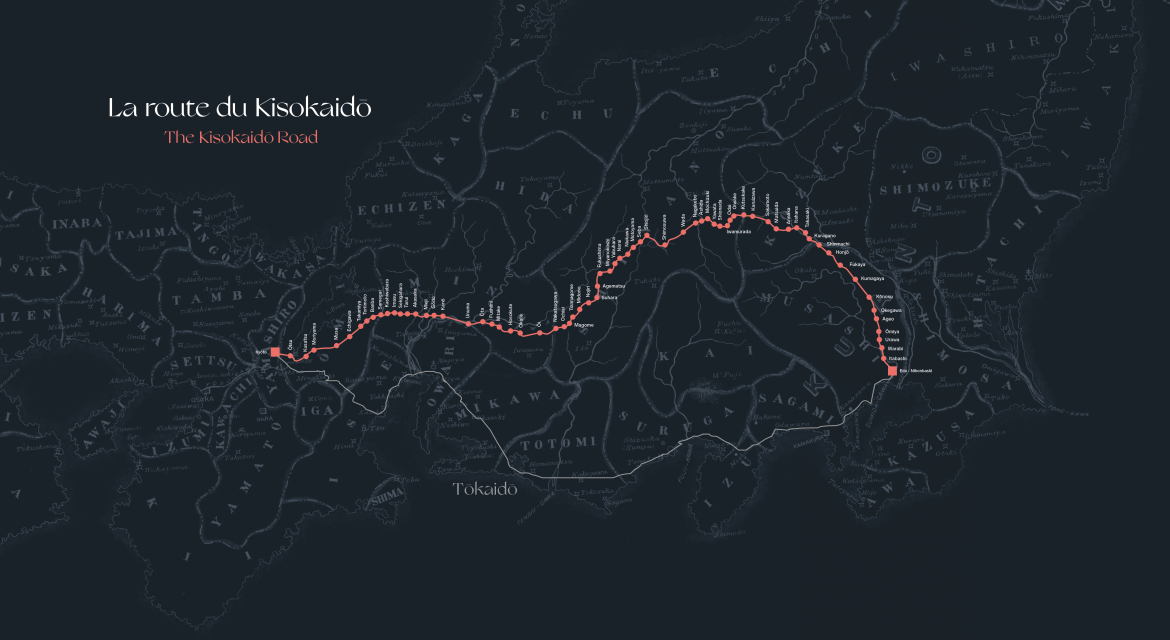
© Bernard Lagacé / Lysandre Le Cléac’h
A journey in two stages on the theme of travel
Two complete series on the Kisokaidō will be shown in the exhibition: the first one, by Eisen and Hiroshige, from the Georges Leskowicz Collection, is considered among the most beautiful in the world, because of the quality of the printing and the vividness of their colors. The second series, realized by Kuniyoshi, is from the former collection of Henri Cernuschi (1821–1896) and will be shown to the public for the first time.
Keisai Eisen (1790–1848) and Utagawa Hiroshige (1797–1858) are two of Japanese art’s most significant figures, recognized in particular for their woodblock prints of ukiyo-e (literally, “images of the floating world”). Eisen began his series The Sixty-Nine Stations of the Kisokaidō, which was completed by his contemporary Hiroshige.
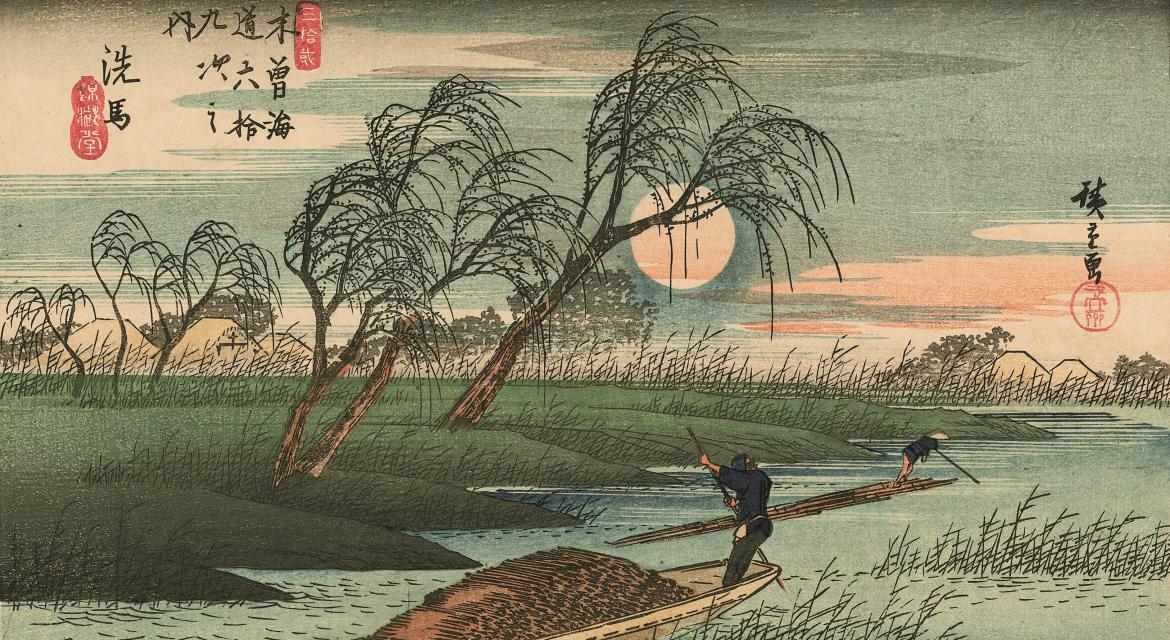
Woodblock print, ōban yoko-e format
© Fundacja Jerzego Leskowicza
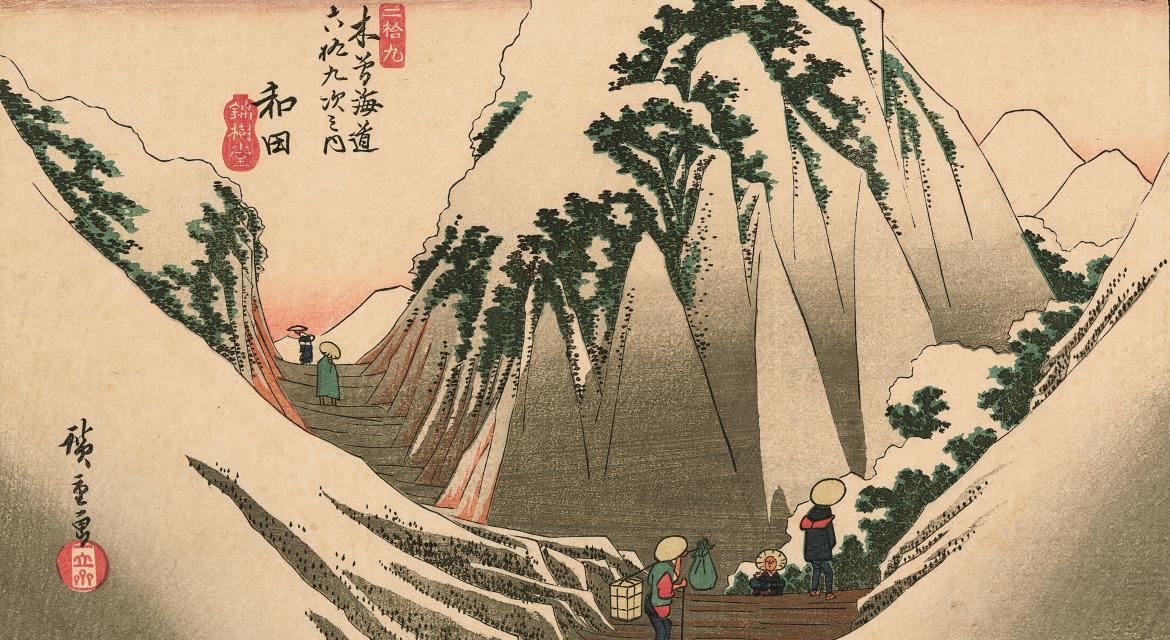
Woodblock print, ōban yoko-e format
© Fundacja Jerzego Leskowicza
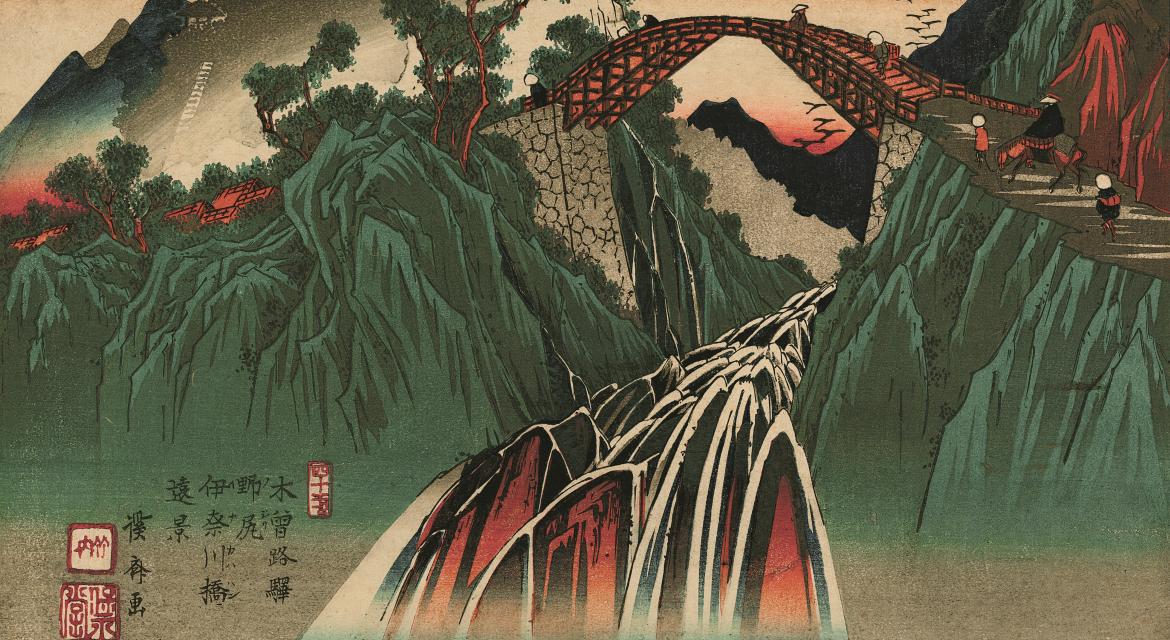
Woodblock print, ōban yoko-e format
© Fundacja Jerzego Leskowicza
Utagawa Kuniyoshi (1797–1861) is one of the most eccentric masters of ukiyo-e. He revisited the same themes as his predecessors, but from a different angle, often tinged with humor. Thus, in his creations, Kuniyoshi approaches the subject in a very personal way, drawing inspiration from classical literature, puppet theater, kabuki, and noh, as well as stories from Japanese folklore: ghosts, monsters, samurai, courtesans, and more. He evoked literary and historic episodes that were very popular during the Edo period (1603–1868), such as The Eight Dog Chronicles by renowned author Kyokutei Bakin (1767–1848), published in 106 volumes between 1814 and 1842.
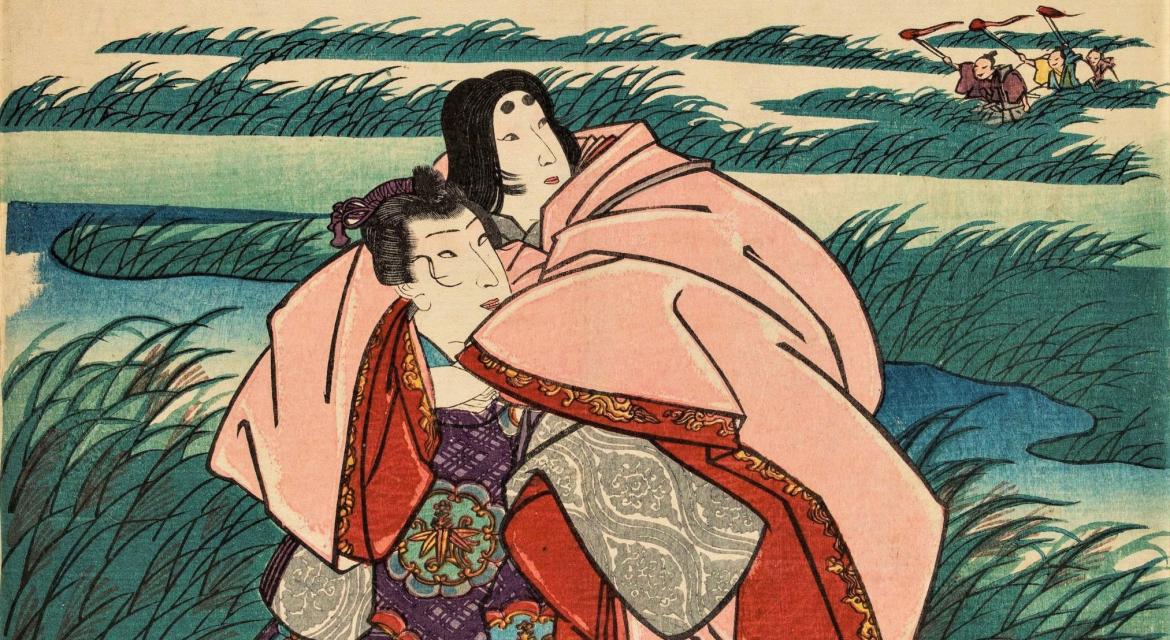
Woodblock print, ōban tate-e format
Cernuschi Museum, Paris, M.C. 4780.40
Henri Cernuschi Bequest, 1896
© Paris Musées / Musée Cernuschi
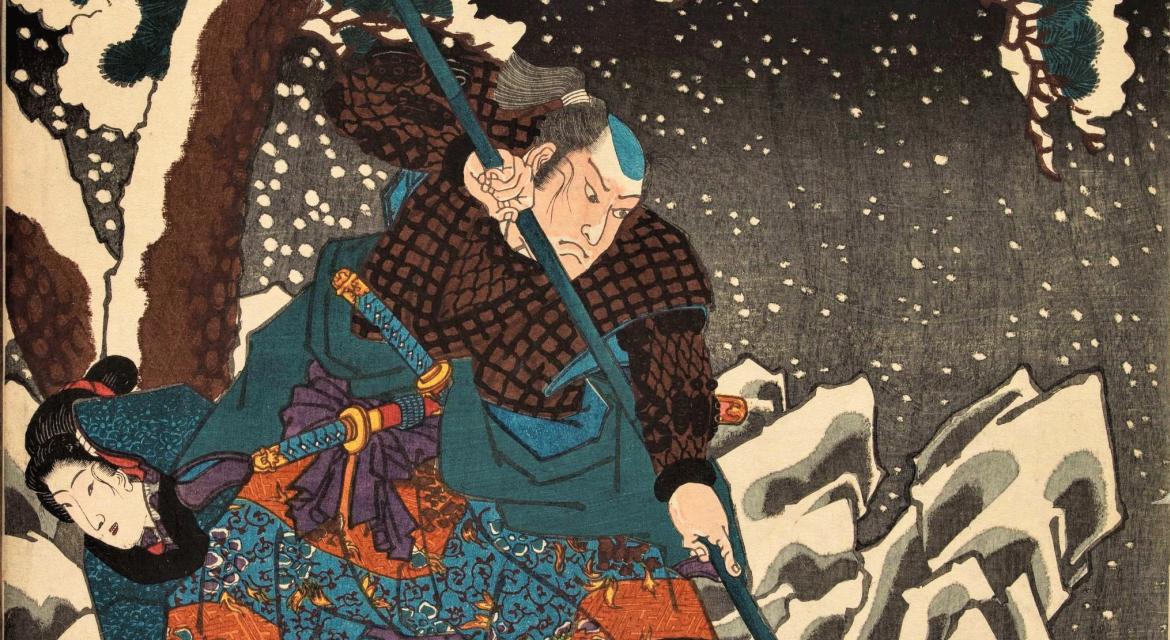
Woodblock print, ōban tate-e format
Cernuschi Museum, Paris, M.C. 4780.62
Henri Cernuschi Bequest, 1896
© Paris Musées / Musée Cernuschi
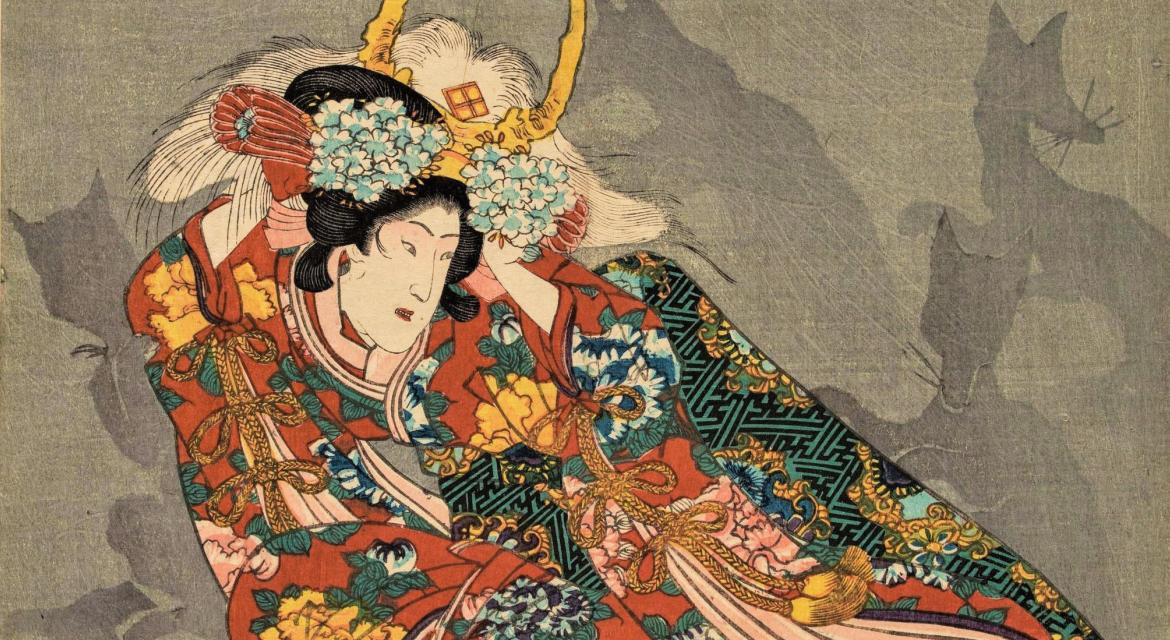
Woodblock print, ōban tate-e format
Cernuschi Museum, Paris, M.C. 4780.30
Henri Cernuschi Bequest, 1896
© Paris Musées / Musée Cernuschi
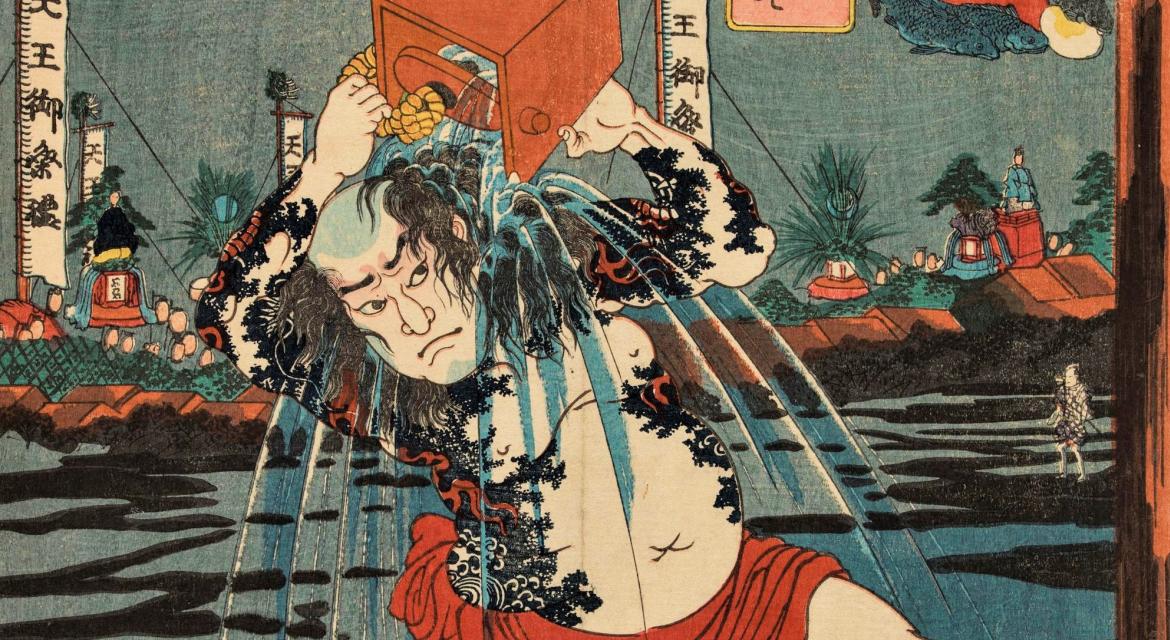
Woodblock print, ōban tate-e format
Cernuschi Museum, Paris, M.C. 4780.04
Henri Cernuschi Bequest, 1896
© Paris Musées / Musée Cernuschi
The two parts of the exhibition will thus offer a panoramic view of the iconographic richness of a single subject, with works realized over a very short period of only some twenty years.
Punctuated by the various stations along the Kisokaidō road, the exhibition includes a selection of exceptional objects echoing the prints on display, including armor, calligraphy boxes, katana, battle saddles, and picnic sets.
Finally, the exhibition’s fourth room will feature a projection of a selection of prints from the very rare suite by Kunisada (1786–1865), from the Museum of Fine Arts in Boston.
This exhibition is organized with exceptional loans from the Georges Leskowicz Collection.
